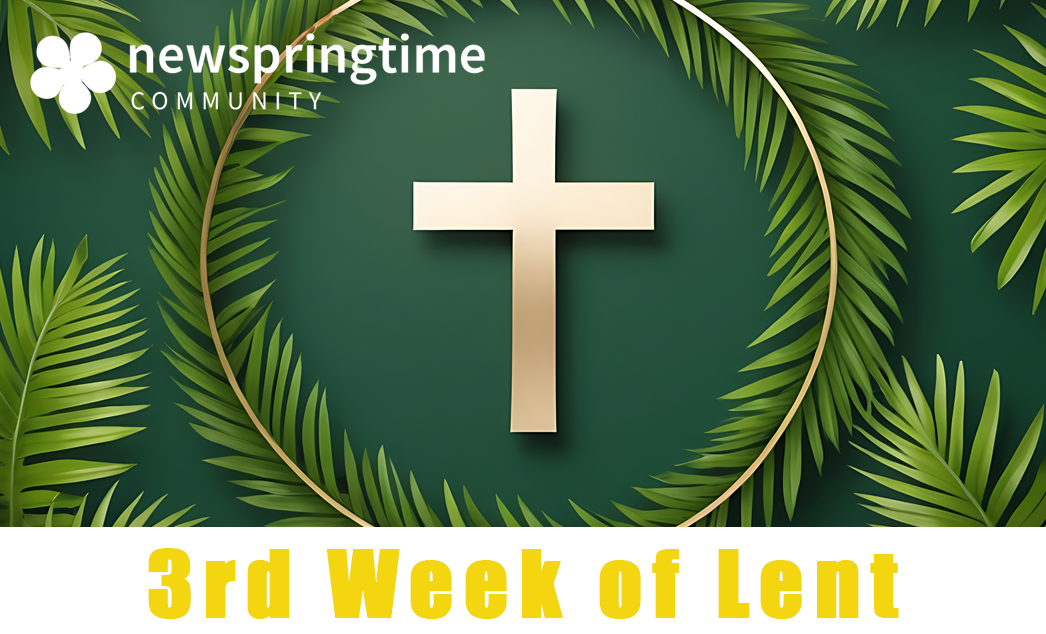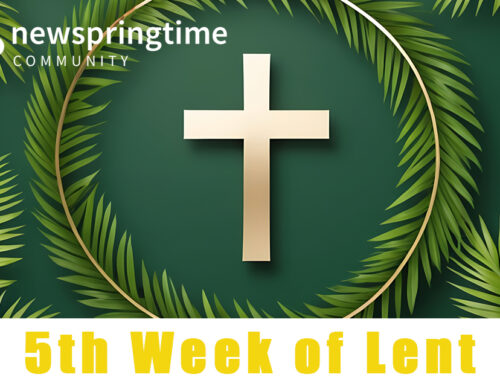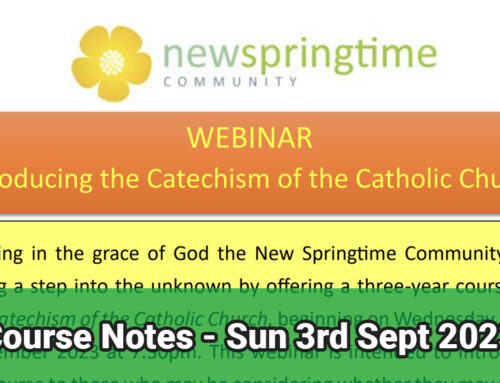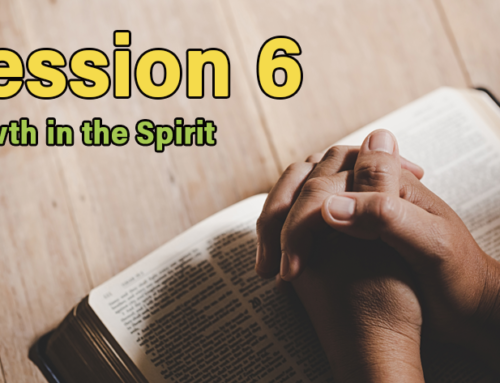If you would like to download a copy of this notes in PDF, please click here.
Commentary 3rd Sunday of Lent B
John places the description of Jesus going to the temple, (cf. Mal 3:1, “The Lord shall suddenly come to His temple”) at the beginning of his Gospel, whereas the other evangelists placed it at the end. It was Passover, the most important of the three major Jewish feasts. It commemorated how God had delivered the Jews from the hands of Pharoah at the time of the exodus. Hundreds of thousands of Jews and non-Jews from far and wide visited the temple for the feast. The events described took place in the large court of the Gentiles. Non-Jews were not allowed to enter the inner temple area under pain of death. This seemed contrary to Is 56:7 which says, “My Temple will be called a house of prayer for the people of all nations.”
The high priest Caiaphas allowed the sale of cattle and doves and the privilege of exchanging money in the temple court as a convenience for pilgrims who would need animals for sacrifice and temple currency to pay their dues. The concessions had become a means of making money for the authorities and had debased the sacred nature of the temple, especially for Gentile visitors. In former times such transactions took place outside its precincts. If people, especially the poor, bought animals in the city of Jerusalem, they would be judged to be unsuitable and refused entry as a sacrificial offering. As a result, they needed to be bought in the temple with temple currency, at rip off prices. Jesus was outraged.
Firstly, these commercial activities were often unjust and exploitative.
Secondly, they were incompatible with the purpose of the temple, namely the worship of God. Perhaps he also was frustrated by the way Gentiles were cut off from the inner temple precincts.
We are told that Jesus, full of righteous anger, used a whip to chase the animals out of the temple and disrupted the activities of the money changers. Implicit in this incident was an indictment of Jewish religion as a whole because it failed to accept the promised Messiah in the person of Jesus. The cursing of the fig tree in Mark 11:12-25, because it bore no fruit, was a symbol of the Jewish religion. When the Jews asked Jesus to justify his behavior with a sign, he spoke about the manner in which the temple of his body would be destroyed on the cross only to be raised to glorious new life after three days. As St Paul said in Eph 2:14, “For Christ himself has brought us peace by making Jews and Gentiles one people. With his own body he broke down the wall that separated them and kept them enemies” i.e., the symbolic wall in the temple which separated Jew and Gentile.
At a secondary level, Jesus was implicitly foretelling the destruction of Jerusalem and its temple, an event that would mark the end of the old Jewish way of worship, and the inauguration of the Christian era, when worship would no longer be confined to a specific place. As Jesus said to the Samaritan woman, “the time is coming and is already here, when by the power of God’s Spirit people will worship the Father as he really is, offering him the true worship that he wants. God is Spirit, and only by the power of his Spirit can people worship him as he really is” (Jn 4:22-24). In Rm 12:1 St Paul said, “Therefore, I urge you, brothers and sisters, in view of God’s mercy, to offer your bodies as a living sacrifice, holy and pleasing to God—this is your true and proper worship.” The time of animal sacrifice was over, Jesus is now and forever the sacrificial lamb.
The Gospel reading concludes the description of the cleansing of the temple by saying that many people came to believe in the name of Jesus. But John tells us that he was sceptical about how genuine their belief really was. We are told that Jesus could read their hearts, he was familiar with the shadow side of human nature. He exercised this charismatic gift when he said to the Samaritan woman at the well, “You are right when you say you haven’t got a husband. You have been married to five men, and the man you live with now is not really your husband. You have told me the truth” “I see you are a prophet, sir,” the woman said” (Jn 4:17-19).
This observation is reminiscent of a verse in Jer 17:9-10, “The heart is deceitful above all things and beyond cure. Who can understand it? “I the Lord search the heart and examine the mind.” In 1 Sam 16:7 we read, “The Lord doesn’t make decisions the way you do! People judge by outward appearance, but the Lord looks at a person’s thoughts and intentions.“ Surely this ability is an example of discernment of spirits, what mystics refer to as a word of knowledge which is prophetic in nature. Jesus exercised that gift at the well of Samaria when he told the Samaritan woman that she had five husbands. This charism is known as the reading of hearts, or kardiagnosis. Harvey Egan, S.J., has described this gift as follows, “the mystical reading of hearts in the strict sense denotes a God-given knowledge of other person’s deepest secrets . . St John Vianney, for example, instinctively knew the sins of others, even before they confessed them.” (Christian Mysticism: The Future of a Tradition, p. 319).





